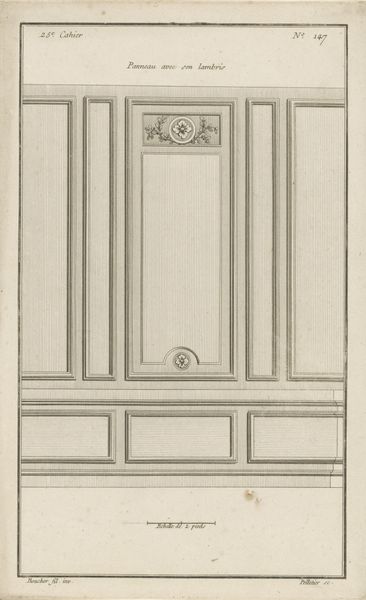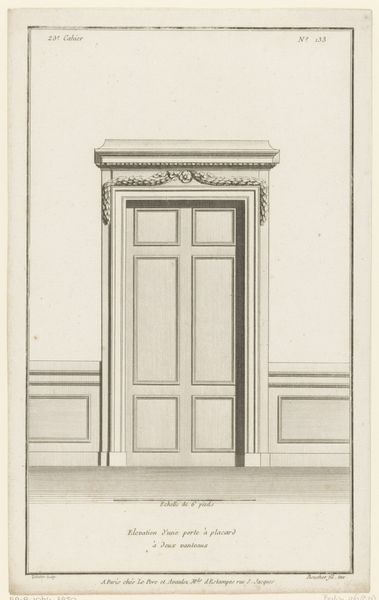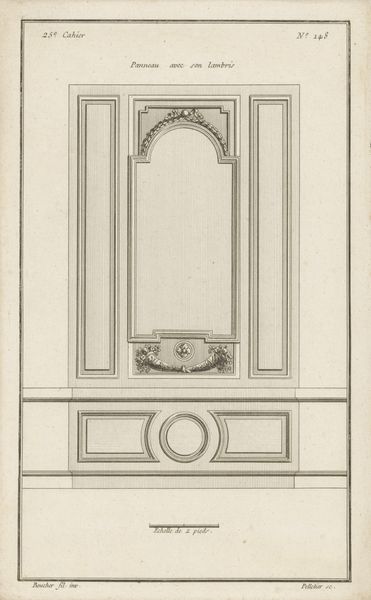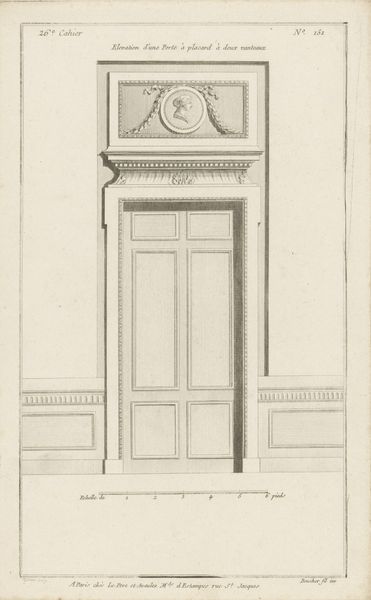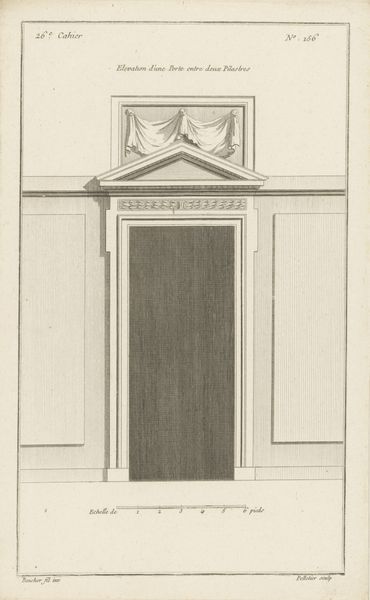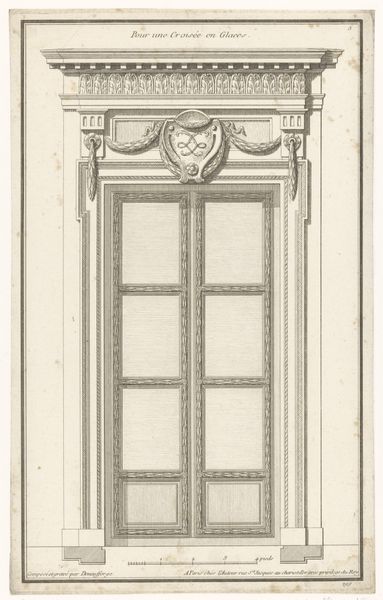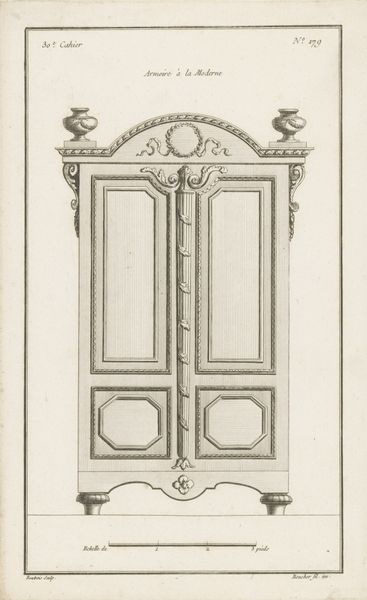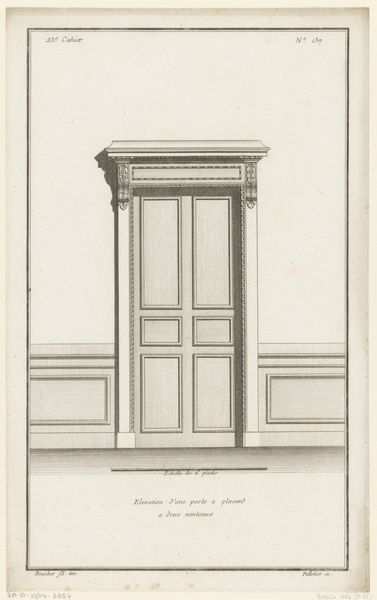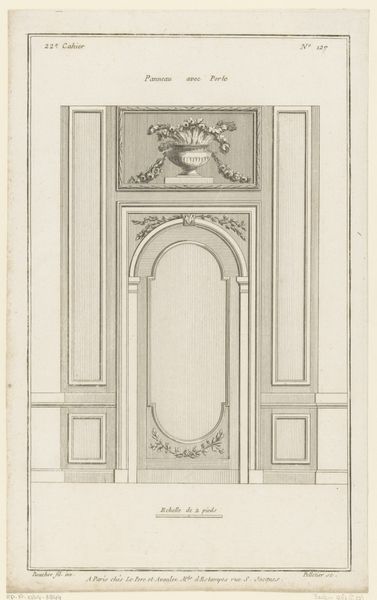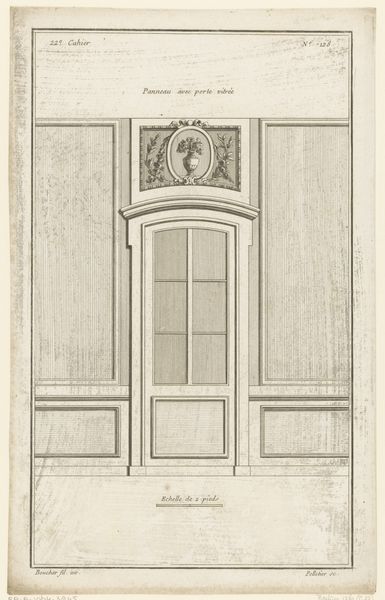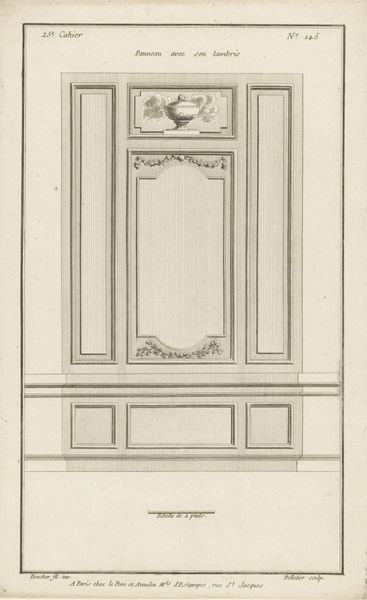
Dimensions: height 326 mm, width 203 mm
Copyright: Rijks Museum: Open Domain
Curator: It’s striking how even in this preliminary form, one can discern the aspirations of an era—this print, “Deur en panelen met medaillon,” which translates to “Door and panels with medallion,” gives us a peek into late 18th-century design. Jean Pelletier executed this engraving sometime between 1772 and 1779. What's your impression? Editor: Stark, almost sterile, yet elegant. It presents a peculiar tension. It reminds me of stage design, a theatrical backdrop absent its actors. There is an almost ghostly presence. Curator: The geometric forms adhere strongly to Neoclassical ideals, reacting against the more elaborate Baroque, yet it retains some of the ornamentation reminiscent of that earlier style. The clean lines suggest a move towards reason and order, characteristic of the Enlightenment’s influence, yet that laurel wreath is heavy with implications. Editor: Absolutely. Wreaths historically denote victory, triumph, memory, or even martyrdom. Is this door leading to someplace heroic? Or does it commemorate something? The medallion itself becomes a focal point, charged with possible meanings even though its contents are blank. In many ways, architecture and furniture communicated political messages of a different kind to painting and sculpture, a subliminal aesthetic indoctrination. Curator: Precisely. The paneling and the precise lines speak to control, the idealised, perfectly symmetrical doorway and panels. Perhaps it represents an imagined entry point into a better world—one ruled by reason and balance. Decorative art played a pivotal role, offering access to symbolic meanings for contemporary viewers—a visual language. Editor: It is fascinating to consider these designs circulating in print—allowing these aesthetic ideas to disseminate. This doorway as a symbol—inviting discussion and shaping architectural trends. One almost has the impression, knowing how they can construct space, that their architecture has a political agenda. Curator: Yes, how design guides a society is really something to consider. Pelletier gives us a blueprint for not just building but also the construction of collective dreams. Editor: Exactly. And in understanding that design language, we gain deeper insight into what the period truly valued and how they wanted their world to reflect those values. Thank you!
Comments
No comments
Be the first to comment and join the conversation on the ultimate creative platform.

